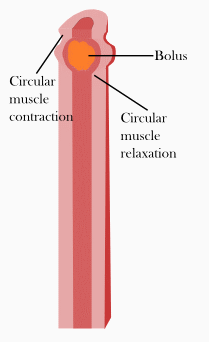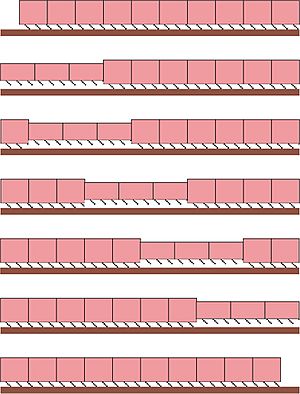Peristalsis facts for kids
Peristalsis is a cool way your body moves things around! It's a wave-like squeezing and relaxing motion of muscles. This action happens in many parts of your body, especially in your digestive system, which is like a long tube for your food.
Contents
How Peristalsis Helps You Eat
One of the best examples of peristalsis is in your esophagus. This is the tube that carries food from your throat down to your stomach. When you swallow, your esophagus doesn't just let gravity do the work.
Instead, special muscles in your esophagus squeeze and relax in a wave. This wave pushes the food, which is now a soft ball, all the way down. It's like squeezing a tube of toothpaste from the bottom up!
The Muscles That Make It Happen
The muscles involved in peristalsis are called smooth muscles. You don't have to think about moving them; they work automatically. They contract (squeeze) and relax in a perfect order. This ensures your food moves smoothly in one direction.
This clever muscle movement is controlled by a special nervous system. It's like an automatic control system for your digestive tract. This system is called the "migrating motor complex." It makes sure food keeps moving forward, even in the lower parts of your digestive system.
Peristalsis in Other Living Things
Peristalsis isn't just found in humans! Earthworms use a very similar method to move around. They stretch and then pull their bodies forward using these wave-like muscle actions. It's how they "swim" through the soil.
Even some modern machines have copied this amazing natural design. Engineers have created robots and pumps that use peristalsis to move liquids or other materials. It shows how smart nature's designs can be!
See also
 In Spanish: Peristalsis para niños
In Spanish: Peristalsis para niños



